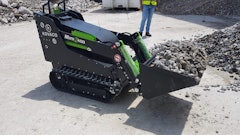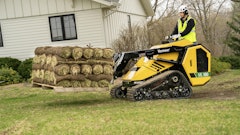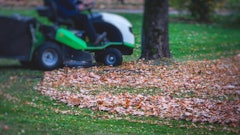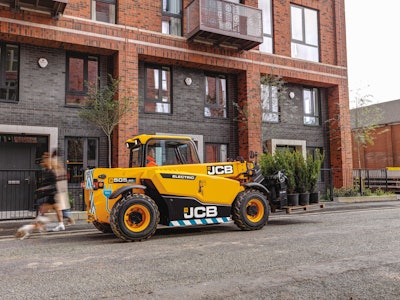
Electric machine experts—including Patrik Psenak, CEO of Volteq Equipment; Darren Ashton, product manager, compact equipment, Volvo Construction Equipment; Lee Tice, product manager at JCB; and Brady Lewis, product manager, emerging products and technology, Case Construction Equipment—dive into the nitty gritty about the benefits, challenges, applications and more.
Green Industry Pros: In what applications are electric machines suitable for?
Tice: We know of one customer who used the 19C-1E to do demolition work in a big box retail store during open hours. The lack of exhaust emissions and the quiet operation enabled the contractor to do the work while customers were in the store and without disrupting business. This makes them ideal for working in the yards of residential customers and in noise-restricted sites like schools and hospitals.
Ashton: We’re seeing electric compact equipment being used in applications we hadn’t really even thought of at the beginning, which is exciting. It’s a good solution for indoor work where fumes are a concern. We’ve even seen it work for small businesses like wineries, ski resorts and zoos, where caring for the environment is a top priority. Busy or populated areas are more acceptable workplaces for electric machines because of the zero emissions and low noise. A lot of turf and landscape work is well suited for electric compact equipment because you take the machines “home” each day and can charge that way. This type of work is also pretty stop-and-go in terms of needing the bigger equipment, so a charge will last longer than in some other applications.
Green Industry Pros: What are the benefits of using electric machines?
Psenak: Reduced operating and maintenance costs of electric machines are significantly decreasing the total cost of ownership over time, making them a compelling investment. Additionally, with features like minimized vibration, zero emissions, lower noise and remote control, operators can work more safely and efficiently.
Tice: Because the electric power is instantaneous, many customers report that the controls feel quicker, more responsive and more precise. For contractors in landscaping, landscape construction and related fields it can make a lot of sense from a marketing perspective to run at least some battery-electric, zero-emissions equipment on your jobs. That sends a clear message to your clients that you care about the environment. It’s a competitive advantage and a brand message that homeowners and commercial customers will respond favorably to now and in the future.
Lewis: Being emissions-free, they comply with zero emissions regulations and/or bid requirements and make it possible to work indoors without any exhaust gasses. Electric vehicles also provide the same working performance as diesel. Lastly, without engines or exhaust systems to maintain, electric equipment has less downtime and costs associated with maintenance.
Ashton: Obviously, the main advantages are the elimination of emissions and fumes, and a significant reduction in noise levels. Related to that is the decreased vibration, which makes for a much nicer operator experience. Users are less fatigued at the end of the day. Lower noise levels also mean that workers can easily talk to each other while the machine is running, which improves productivity and safety. Another significant advantage is how much simpler maintenance is for electric machines. Because there’s no engine, DEF and filters aren’t needed, so basically all you need is grease and hydraulic oil. Overall, the lifetime of battery-electric components should be equal to or better than that of the diesel engine on a conventional machine. Another perk is that electric machines do not idle. When the operator pauses (for example, to wait for someone to put in a tree they just dug a hole for), the machine turns off, saving battery life and hours accumulated on the machine. And, of course, you’re saving money by not needing fuel. You may also be able to leverage tax incentives and grants that promote eco-friendly practices. And, because the tech is still new and different, many manufacturers are offering flexibility in how to acquire these machines.
Green Industry Pros: What are the challenges that come along with using this equipment?
Psenak: One of the primary concerns surrounding battery-powered equipment is the fear of battery degradation and the associated replacement costs. However, commercial lithium batteries in construction equipment are built to last, with ratings of 2,000-3,000 charging cycles. This translates to over 12 years of battery life under normal usage conditions.
Lewis: Energy management is certainly a consideration when it comes to choosing electric equipment, as the specific application duty cycle and the machine runtime need to align. There are several methods of charging available, so it’s something that needs to be planned and organized ahead of time. The technology for off-grid charging at remote jobsites is still in its infancy and has a lot of maturing to do, which is something we expect to improve in the future. There are still some jobs and worksites that aren’t practical for electric vehicles yet. Because this is the aspect of electric equipment that people have the most questions or concerns over, it’s important we keep working to get it right. There are more options all the time, and we have some great partners working with us to develop solutions better suited for off-road charging.
Ashton: If you’re able to plug in at the machine’s home base, the best choice is a 240-volt, Level 2 AC setup, which is the same as for electric cars. It’s also fine to charge on a standard household outlet, but it will take quite a bit longer. There are also portable options like off-board DC fast chargers and solar-powered chargers if you need to take the power source to the machine instead of the other way around. For those wondering how long a charge will last, it depends on what you’re doing. If you’re doing tougher work like cutting and grading, you may need a quick charge over lunch. If you’re using the machine intermittently or in lighter applications, a charge can probably last all day. – Ashton
Green Industry Pros: What’s your advice for landscape pros interested in integrating this technology?
Tice: If you have a single job or a temporary need for these capabilities, you can rent these machines at most of the national rental outlets. If you think you’ll use one on a regular basis and want to buy one, just run the numbers like you would any piece of equipment. A battery electric machine may cost 30% to 40% more than the diesel equivalent, but don’t forget to factor in in the savings you get from not having to supply diesel fuel and the time and cost of diesel engine maintenance. When you combine those operating costs with your costs for labor, insurance, overhead, etc., and break it down into an hourly rate, you might find that the difference is not all that great.
Lewis: Take a hard look at your application(s) and how you use/would use the equipment. If your actual energy needs align with the capabilities of electric equipment, there are a whole host of additional advantages (zero emissions, indoor operation, noise, maintenance) you could benefit from. Also, there are a lot of misconceptions out there about electric and how much energy machines really need. Find a trusted source of information, like your local dealer, and educate yourself. If you’re unsure if electric will work for you, look at rental options or a demo. Try out the machine in your application(s) to see if it’s right for you.
Ashton: If the hesitation has to do with cost, I encourage you to look beyond the sticker price because the total cost of ownership helps make up for that. Lower maintenance costs and fewer operating hours mean reduced wear and tear and preservation of residual value. Plus, there’s the value of being able to do work you couldn’t do before if noise or emissions were a problem. If charging or battery capacity are your concerns, just know that they’re probably better than you think and will continue improving for quite some time. And if the performance part is holding you back, I really encourage you to get in a machine and try it. That’s the best way to address your questions and concerns and see just how impressive electric machines can be.







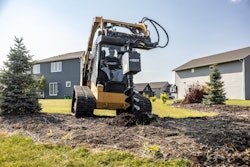
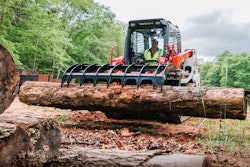

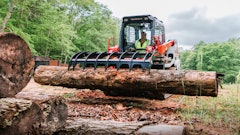


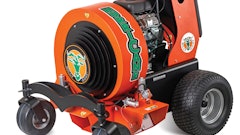
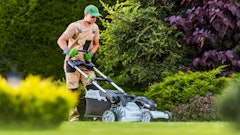
![Doosan Bobcat Wacker Neuson Stack 2ec Js Pb V6e[1]](https://img.greenindustrypros.com/mindful/acbm/workspaces/default/uploads/2025/12/doosan-bobcat-wacker-neuson-stack2ecjspbv6e1.CPyyz8ubHn.png?ar=16%3A9&auto=format%2Ccompress&bg=fff&fill-color=fff&fit=fill&h=135&q=70&w=240)



